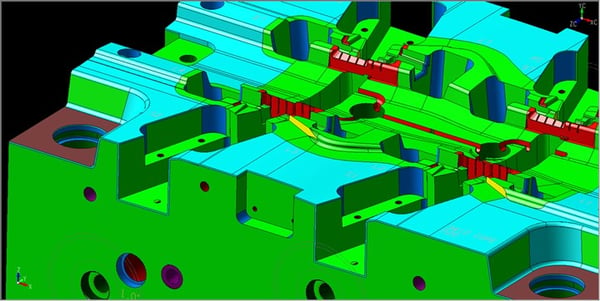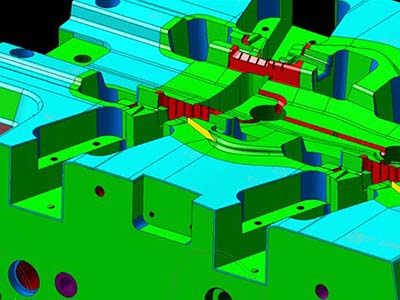Model-based definition replaces technical drawings to communicate precise product definitions between designers and manufacturers.
Traditionally drawings have been an indispensable and unambiguous definition of the finished product—a vital part of the service agreement between the customer and those responsible for tooling and inspection. Unfortunately, for many shops, 3D models are still only a supplement to the official authority of the drawing. However, a growing number of companies involved in product design, mold design, machining and inspection are finding ways to effectively communicate across these functions using model-based definition (MBD)—without any drawings.

The face colors on this core block help to communicate the purpose of different areas of the block to the shop (part, seal off, clearance). Photo Credit: Superior Tool and Mold
A primary benefit of MBD is faster turnaround time. This is important, as a project begins with the customer submitting their part design to the molder as a 3D CAD model—including nominal sizes and locations of the geometry—that are accurate to five or six decimal places. This model serves as the basic, unambiguous definition of size and form with no required dimensions.


